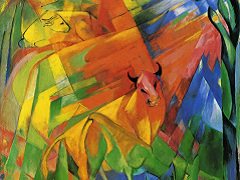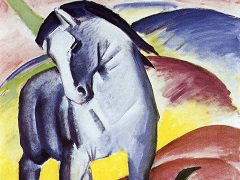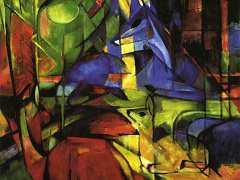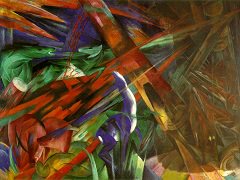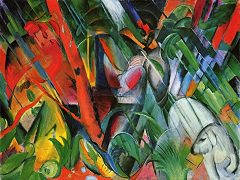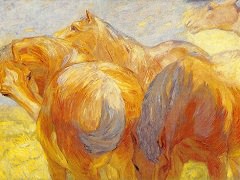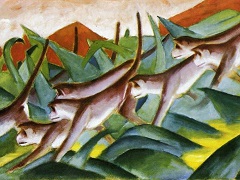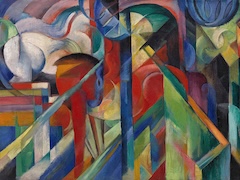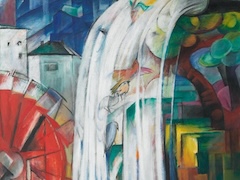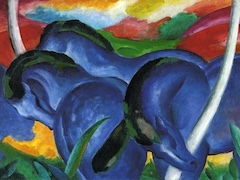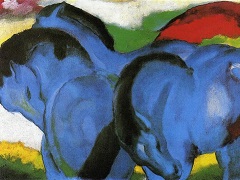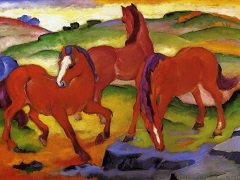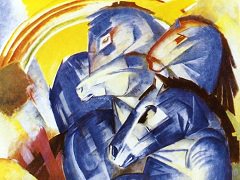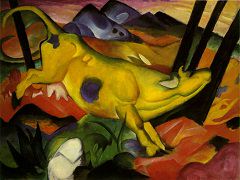Tirol by Franz Marc

The full implication of this motif for the art of Franz Marc can best be seen in one of his last oil paintings, Tirol, painted in 1913 and retouched in 1914. The overall image of this painting is, as in Fate of the Animals, one of cataclysmic destruction. The heavens have broken asunder and mountains are crumbling and depositing rocks and ruin upon the village below. In the lower part of the painting two small cottages appear on a hilly bluff, and to the left of them stand two dead trees.
But our attention is consistently drawn to the dominant motifs of the foreground, the thin, diagonally inclined tree which sweeps across the canvas from the lower right-hand corner to the left center of the composition. The branches of this tree culminate in what can best be described as a sickle shape. The tree, in fact, assume the form of some giant scythe. The painting remained in this state throughout the year 1913, for it, to, along with Fate of the Animals, was exhibited at the First German Herbstsalon. After the exhibition closed, however, Marc asked to have the painting returned to him and later in 1914 he added, immediately above the diagonal tree, the same motif of the "Apocalptic Woman" that had fascinated artist of the late fifteenth century, the motif which indicated that a rebirth of man would follow the destruction of the evil society of the present, the motif which spoke of the coming "Age of Righteousness".

